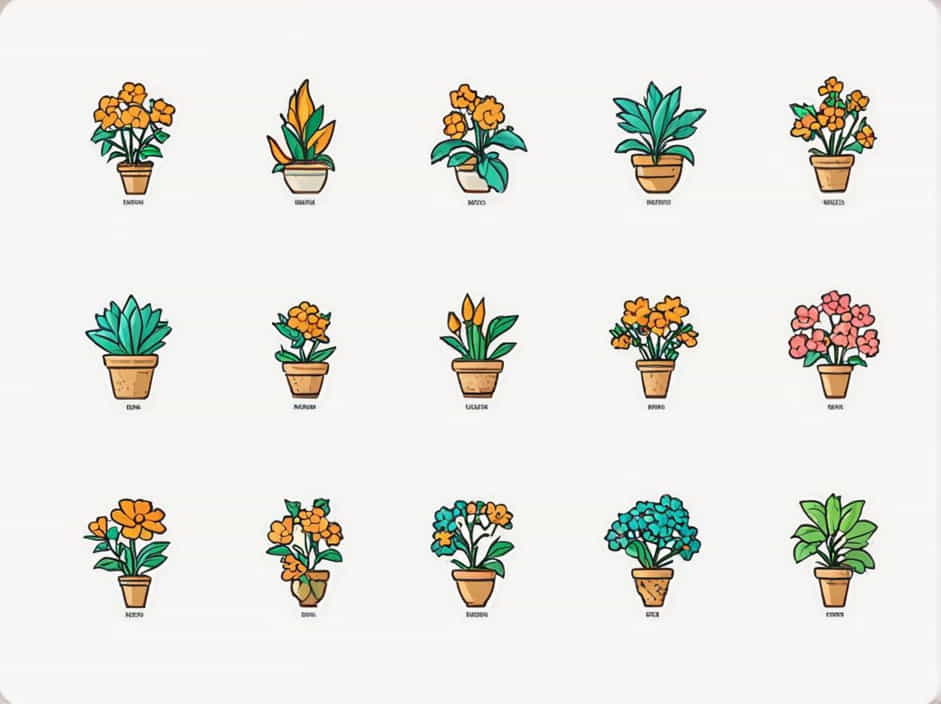The morphology of flowering plants is a crucial topic in botany, especially for students preparing for competitive exams like NEET and UPSC. Understanding the structure, forms, and modifications of plant parts helps in identifying plant species and their adaptations.
The Old NCERT Biology books provide an in-depth explanation of the morphology of angiosperms (flowering plants), covering different plant organs such as roots, stems, leaves, flowers, fruits, and seeds. This guide will simplify key concepts and highlight important aspects of plant morphology.
Root System in Flowering Plants
1. Types of Root Systems
Roots anchor the plant and absorb water and nutrients. There are two main types:
- Taproot System – Found in dicots, this system has a primary root with secondary and tertiary branches (e.g., mango, mustard).
- Fibrous Root System – Found in monocots, this system has a cluster of roots arising from the base of the stem (e.g., wheat, grass).
- Adventitious Roots – Roots that develop from non-root parts like stems or leaves (e.g., banyan tree, maize).
2. Modifications of Roots
Roots may be modified for specific functions:
- Storage Roots – Store food (e.g., carrot, radish, beetroot).
- Prop Roots – Provide support (e.g., banyan tree).
- Pneumatophores – Help in respiration in swampy areas (e.g., mangroves).
Stem in Flowering Plants
1. Functions of the Stem
The stem supports leaves, transports water and nutrients, and stores food in some plants.
2. Modifications of the Stem
Stems are modified for various functions:
- Underground Modifications – Storage of food (e.g., potato, ginger).
- Aerial Modifications – Protection (e.g., thorns in Bougainvillea), climbing (e.g., tendrils in grapes).
- Subaerial Modifications – Vegetative propagation (e.g., runners in strawberry, stolons in mint).
Leaf in Flowering Plants
1. Structure of a Leaf
A typical leaf consists of:
- Leaf Base – Attaches the leaf to the stem.
- Petiole – Connects the leaf blade to the stem.
- Lamina (Leaf Blade) – The broad, green part that performs photosynthesis.
2. Types of Leaf Venation
- Reticulate Venation – Found in dicots (e.g., hibiscus, mango).
- Parallel Venation – Found in monocots (e.g., banana, grass).
3. Leaf Modifications
Leaves undergo modifications for different functions:
- Tendrils – Help in climbing (e.g., pea plant).
- Spines – Reduce water loss (e.g., cactus).
- Phyllode – Performs photosynthesis in some plants (e.g., Australian Acacia).
Flower: The Reproductive Organ of Angiosperms
1. Structure of a Flower
A typical flower consists of four floral whorls:
- Calyx (Sepals) – Protects the flower bud.
- Corolla (Petals) – Attracts pollinators.
- Androecium (Stamens) – Male reproductive organs.
- Gynoecium (Carpels/Pistil) – Female reproductive organs.
2. Types of Flowers
- Complete Flower – Has all four whorls (e.g., hibiscus).
- Incomplete Flower – Lacks one or more whorls (e.g., corn).
- Unisexual Flower – Has either stamens or carpels (e.g., papaya, cucumber).
- Bisexual Flower – Contains both stamens and carpels (e.g., rose, sunflower).
3. Floral Symmetry
- Actinomorphic (Radial Symmetry) – Symmetrical along multiple axes (e.g., mustard).
- Zygomorphic (Bilateral Symmetry) – Symmetrical along one axis (e.g., pea, orchid).
Fruit in Flowering Plants
1. Types of Fruits
- Simple Fruits – Develop from a single ovary (e.g., mango, tomato).
- Aggregate Fruits – Develop from multiple ovaries of a single flower (e.g., strawberry).
- Multiple Fruits – Form from an entire inflorescence (e.g., pineapple, jackfruit).
2. Fruit Modifications
- Dehiscent Fruits – Split open when mature (e.g., pea, bean).
- Indehiscent Fruits – Do not split open (e.g., coconut, sunflower).
Seeds in Flowering Plants
1. Structure of a Seed
A seed consists of:
- Seed Coat – Protects the seed.
- Endosperm – Stores food in some seeds.
- Embryo – Contains the cotyledons, plumule (shoot), and radicle (root).
2. Types of Seeds
- Monocot Seeds – Have one cotyledon (e.g., maize, wheat).
- Dicot Seeds – Have two cotyledons (e.g., bean, mango).
Inflorescence in Flowering Plants
1. Types of Inflorescence
- Racemose – Main axis grows continuously, flowers arranged laterally (e.g., mustard).
- Cymose – Main axis ends in a flower, further growth occurs in a limited manner (e.g., jasmine).
Understanding the morphology of flowering plants is essential for studying plant diversity, adaptations, and classification. The Old NCERT Biology books provide a strong foundation for this topic, making it easier for students to grasp key concepts.
By learning about roots, stems, leaves, flowers, fruits, and seeds, students can develop a deeper appreciation for plant structures and their functions in the ecosystem.
